Alchemy by Jackson Pollock. Discovering the artist at work
From 14 February 2015 to 6 April 2015
Venice
Place: Peggy Guggenheim Collection
Address: Dorsoduro 701
Times: Every day from 10am to 6pm. Closed on Tuesday
Responsibles: Curata da Luciano Pensabene Buemi e Roberto Bellucci
Organizers:
- Con patrocinio della Regione del Veneto
- la mostra beneficia del supporto di Intrapresae Collezione Guggenheim
- della Private Bank BSI e di Enel. Nec Display Solutions Italia è main sponsor dell’esposizione.
Ticket price: Full rate € 14, reduced ticket € 12. For others admission fees please check the web site
Telefono per informazioni: + 39 041 2405411
E-Mail info: info@guggenheim-venice.it
Official site: http://www.guggenheim-venice.it
After more than a year's absence, Jackson Pollock's Alchemy – one the museum’s masterpieces and a masterpiece of American Abstract Expressionism – has returned to the Peggy Guggenheim Collection. Pollock's work has undergone an extensive cycle of studies at the Opificio delle Pietre Dure of Florence, in collaboration with eleven Italian science institutions engaged in the field of conservation of cultural heritage. The remarkable results will be presented in an interactive and multimedia installation, offering insights into the science of conservation and into Pollock’s working methods. Above all this will be an opportunity to see the painting for the first time in its original splendor after the lengthy operation of surface cleaning.
Alchemy is one of Jackson Pollock’s earliest poured paintings, executed in the revolutionary technique that constituted his most significant contribution to twentieth-century art. After long deliberation before the empty canvas, he used his entire body in a picture-making process that can be described as drawing in paint. By pouring streams of commercial paint onto the canvas from a can with the aid of a stick, Pollock made obsolete the conventions and tools of traditional easel painting. Surrealist notions of chance and automatism are given full expression in Pollock’s classic poured paintings, in which line no longer serves to describe shape or enclose form, but exists as an autonomous event, charting the movements of the artist’s body. As the line thins and thickens it speeds and slows, its appearance modified by chance behavior of the medium such as bleeding, pooling, or blistering.
When Alchemy is viewed from a distance, its large scale and even emphasis encourage the viewer to experience the painting as an environment. The textured surface is like a wall on which primitive signs are inscribed with white pigment squeezed directly from the tube. Interpretations of these markings have frequently relied on the title Alchemy; however, this was assigned not by Pollock, but by Ralph Manheim and his wife, neighbors of the Pollocks in East Hampton.
Alchemy is one of Jackson Pollock’s earliest poured paintings, executed in the revolutionary technique that constituted his most significant contribution to twentieth-century art. After long deliberation before the empty canvas, he used his entire body in a picture-making process that can be described as drawing in paint. By pouring streams of commercial paint onto the canvas from a can with the aid of a stick, Pollock made obsolete the conventions and tools of traditional easel painting. Surrealist notions of chance and automatism are given full expression in Pollock’s classic poured paintings, in which line no longer serves to describe shape or enclose form, but exists as an autonomous event, charting the movements of the artist’s body. As the line thins and thickens it speeds and slows, its appearance modified by chance behavior of the medium such as bleeding, pooling, or blistering.
When Alchemy is viewed from a distance, its large scale and even emphasis encourage the viewer to experience the painting as an environment. The textured surface is like a wall on which primitive signs are inscribed with white pigment squeezed directly from the tube. Interpretations of these markings have frequently relied on the title Alchemy; however, this was assigned not by Pollock, but by Ralph Manheim and his wife, neighbors of the Pollocks in East Hampton.
SCARICA IL COMUNICATO IN PDF
COMMENTI

-
 Dal 17 July 2025 al 2 November 2025
Cortona | Sedi varie
Dal 17 July 2025 al 2 November 2025
Cortona | Sedi varie
-
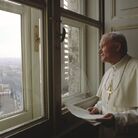 Dal 17 July 2025 al 30 November 2025
Roma | Museo Nazionale di Castel Sant’Angelo
Dal 17 July 2025 al 30 November 2025
Roma | Museo Nazionale di Castel Sant’Angelo
-
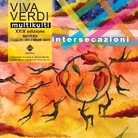 Dal 15 July 2025 al 19 December 2025
Matera | Sedi varie
Dal 15 July 2025 al 19 December 2025
Matera | Sedi varie
-
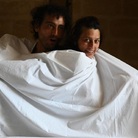 Dal 15 July 2025 al 21 July 2025
Matera | Fondazione Le Monacelle
Dal 15 July 2025 al 21 July 2025
Matera | Fondazione Le Monacelle
-
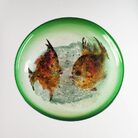 Dal 12 July 2025 al 24 November 2025
Venezia | Museo del Vetro
Dal 12 July 2025 al 24 November 2025
Venezia | Museo del Vetro
-
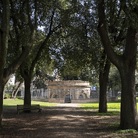 Dal 11 July 2025 al 21 September 2025
Roma | Loggia dei Vini - Villa Borghese
Dal 11 July 2025 al 21 September 2025
Roma | Loggia dei Vini - Villa Borghese



